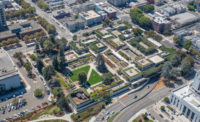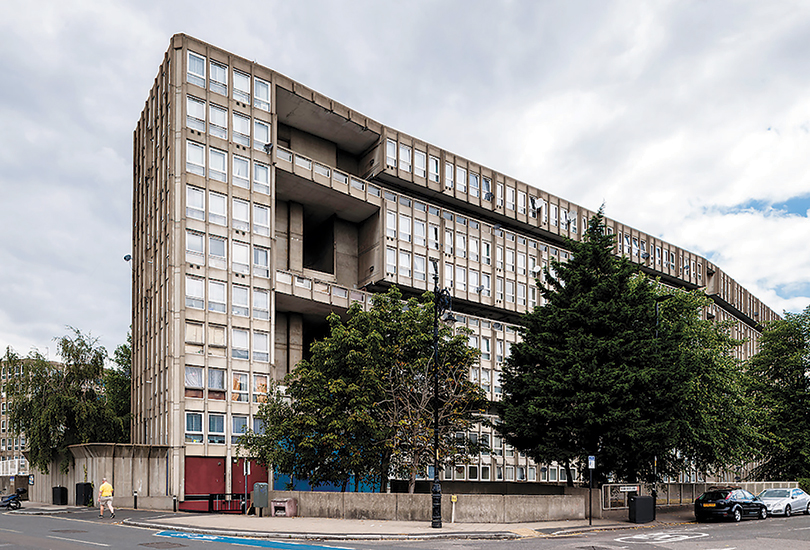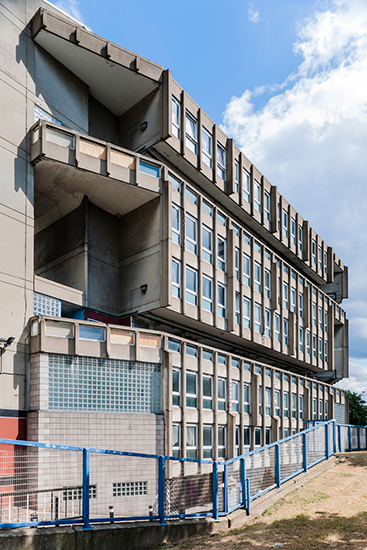Last Days of the Smithsons’ Robin Hood Gardens

The Smithsons’ Robin Hood Gardens is scheduled for demolition by the end of the year.
Photo © Iñigo Bujedo-Aguirre

Robin Hood Gardens - Alison and Peter Smithson
Photo © Iñigo Bujedo-Aguirre

Robin Hood Gardens - Alison and Peter Smithson
Photo © Iñigo Bujedo-Aguirre

The complex will be replaced by new buildings in which half of the units will be designated as affordable.
Rendering courtesy Haworth Tompkins




The “Streets in the Sky” invented by Alison and Peter Smithson at their simultaneously celebrated and notorious Robin Hood Gardens in East London are still partly inhabited. But the longer of the two snaking Brutalist concrete buildings forming this once-exemplary public-housing project stands empty and boarded up. Demolition will start before the end of the year. A long campaign to save it, waged by leading architects including Richard Rogers and the late Zaha Hadid, fell on deaf ears. New, higher-density housing called Blackwall Reach is slated to be built on its site by a large private public-housing provider.
The Smithsons (Alison, 1928–93) and Peter (1923–2003) were British architecture’s internationally respected power couple of the postwar years. Robin Hood Gardens (1969–72), their only mass-housing project, sullied their reputation as it immediately became known for vandalism and crime. Poor tenant management was part of this, but the Smithsons’ design of entrances and common areas was also criticized.
They arranged their precast concrete components in a highly sculptural manner, the facades of the blocks (one 10 stories high, one seven) deeply incised with full-length covered walkways. Hardly streets, but broader than those in most deck-access public-housing projects, they at least provide the tenants with a front door into the fresh air rather than dim internal corridors. Inside, the apartments— many of them duplexes—are well planned and relatively generously laid out, according to the government-enforced public-housing standards of the time.
The Smithsons’ other key move was for the two long, meandering structures to enclose a large, protected landscaped garden at its center. Given that the site is hemmed in by busy roads, this urban oasis is more than necessary.
During the seven-year campaign from 2008 to 2015 to save Robin Hood Gardens, the project was twice refused listed (protected) status. The final decision to demolish was made by the local borough in August 2015. Since then, Robin Hood Gardens has been on borrowed time.
Many large public-housing projects of the postwar period are now being redeveloped across London and other cities. Usually this involves increasing the density, nearly always in partnership with private developers. The large housing project in which the fire-gutted Grenfell Tower stands has itself recently had new mid-rise housing spliced in. A common complaint is “social cleansing”– that established low-income communities are destroyed because the new affordable housing isn’t, for them.
Well-regarded architects are involved in replacing Robin Hood Gardens’ buildings. Haworth Tompkins won the RIBA Stirling Prize for their new Everyman Theatre in Liverpool. The firm, along with urban-planning specialists Metropolitan Workshop, will contribute a pair of brick-clad buildings, each on the western side, while Denmark’s C.F. Moller will do the same for the eastern ones. In the new scheme, the perimeter-block arrangement is kept, with the central garden slightly reduced and relandscaped. Where Robin Hood Gardens has a concrete perimeter wall, the new structures will be better knit into the surrounding area. With larger edifices, rising to 12 stories, the result will be 621 apartments where the Smithsons provided 213—though many of these will be for sale, not subsidized rentals. Some 50 percent of the new homes here are described as “affordable,” meaning below market price to buy or rent—but, in London, “affordable” is a relative term, since prices are generally high.
Love or loathe the Smithsons’ uncompromisingly Brutalist aesthetic, Robin Hood Gardens is a great deal more distinctive than its replacements will be. Regardless, says Haworth Tompkins director, Toby Johnson, “We respect the legacy of the Smithsons and have been all too aware of the intellectual challenge involved in working on Blackwall Reach.”








